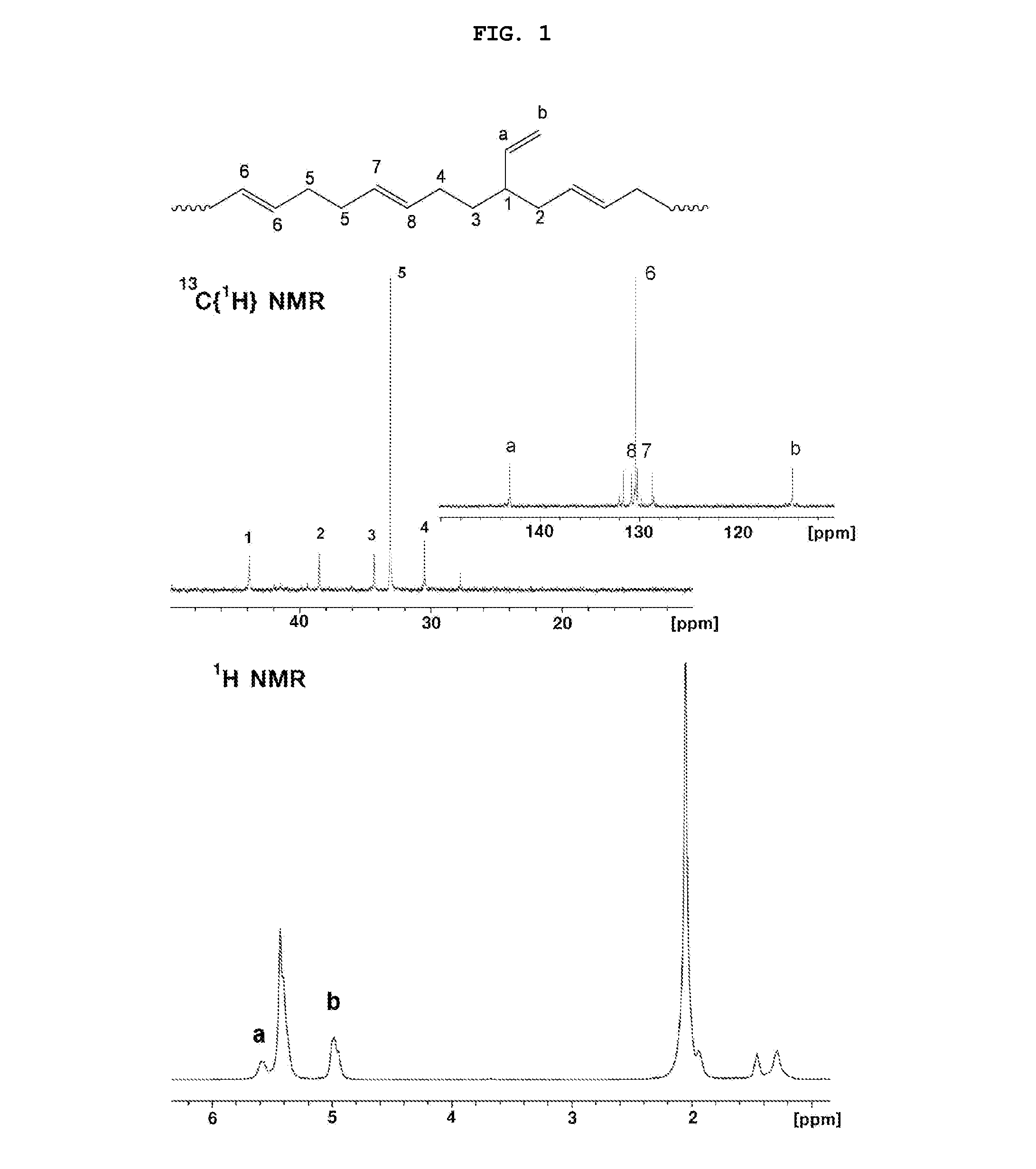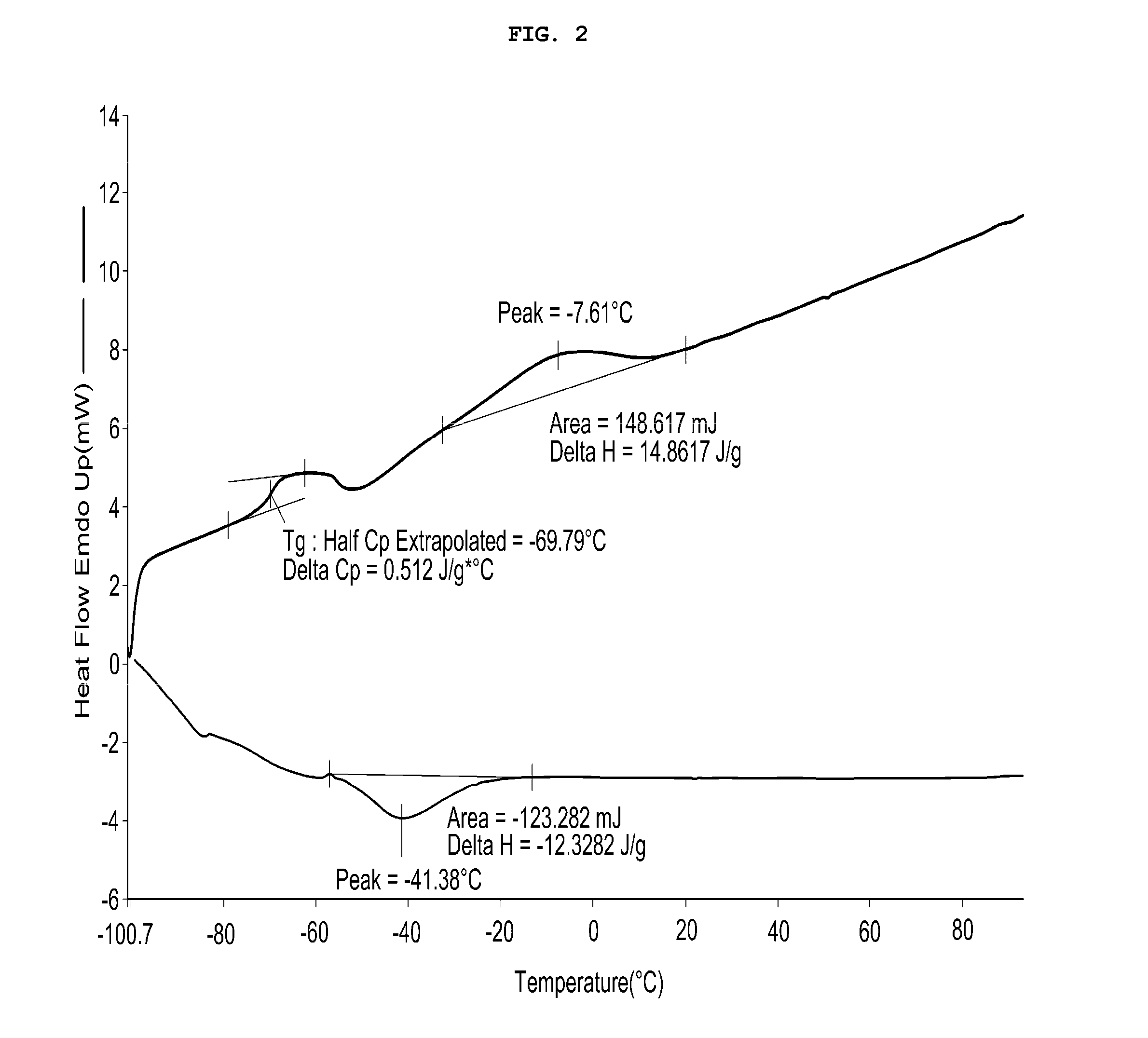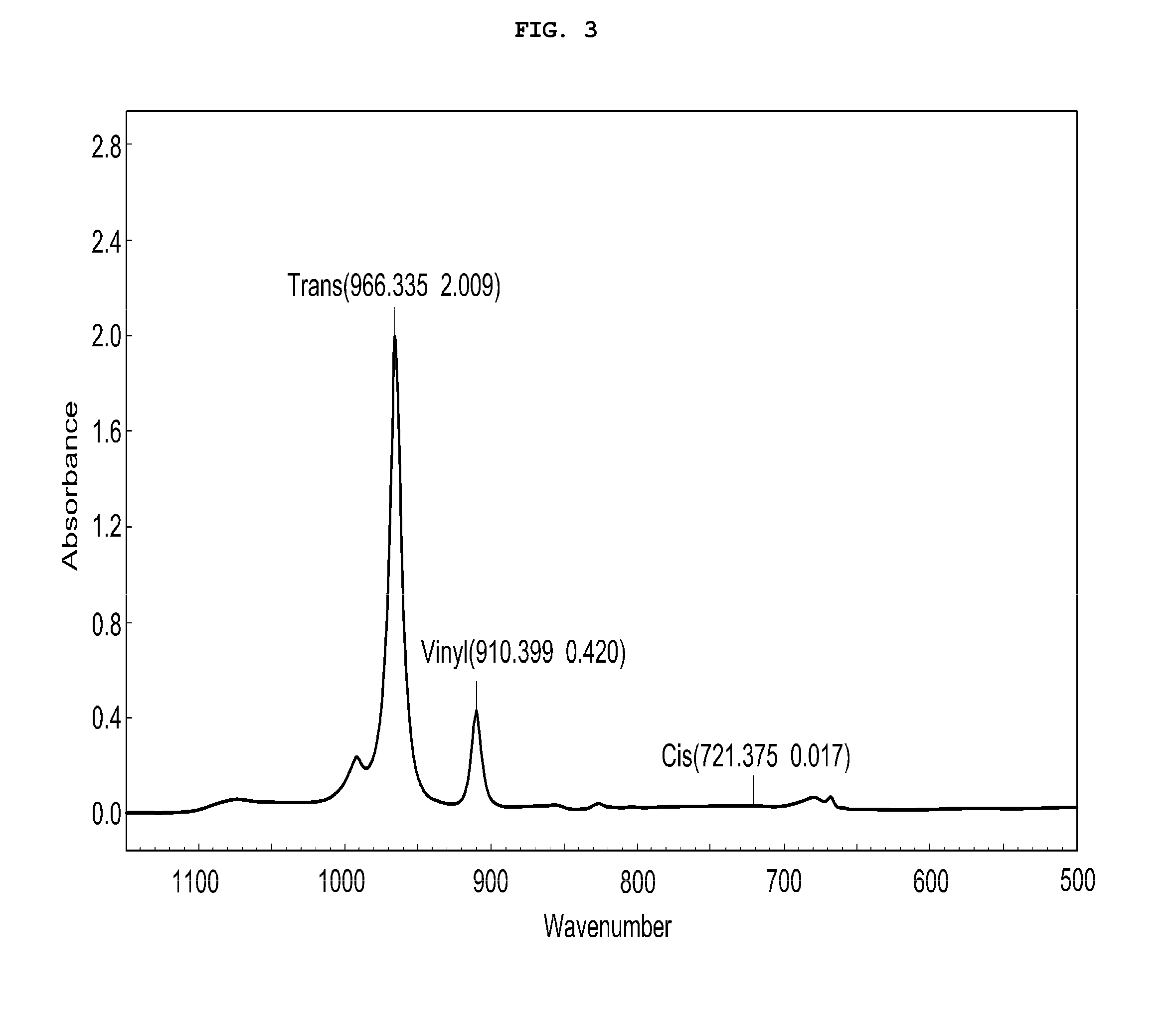Novel bimetallic cobalt-aluminum adduct catalyst system for preparing high trans-1,4-polybutadiene
a cobalt-aluminum adduct and catalyst technology, applied in the direction of organic compound/hydride/coordination complex catalyst, physical/chemical process catalyst, chemical apparatus and processes, etc., can solve the problems of high molecular weight of trans-polybutadiene, difficult control, and high mooney viscosity of its compound, etc., to increase the conversion of monomers, improve the production of trans-polybutadiene, and improve the effect of process quality
- Summary
- Abstract
- Description
- Claims
- Application Information
AI Technical Summary
Benefits of technology
Problems solved by technology
Method used
Image
Examples
example 1
Synthesis of tri-2-phenylphenoxy aluminum
[0038]All reactions in all the examples mentioned below were carried out in an atmosphere of nitrogen or argon gas, and a dry box filled with nitrogen was used, if necessary. All the solvents used were anhydrous solvents and were, if necessary, purified by a dehydration process. 2-phenyl phenol (3.00 g, 17.6 mmol) was dissolved in toluene (24.0 mL), and the solution was well stirred at room temperature for 1 hour while a triethyl aluminum solution (1 M hexane, 6.00 mL, 6.00 mmole) was slowly added thereto, thereby obtaining a reaction product.
[0039]The results of NMR analysis of the obtained tri-2-phenylphenoxy aluminum are as follows:
[0040]1H NMR (C6D6): δ 7.25−6.75 (m, 48H, CH), 6.67 (t, J=6.4 Hz, 2H, 4-CH [bridge]), 6.36 (d, J=8.0 Hz, 4H, 2-CH) ppm.
[0041]13C{1H}NMR (100 MHz, C6D6, 298K): δ=153.35, 147.11, 139.88, 135.94, 133.51, 132.47, 132.13, 130.99, 129.87, 129.67, 129.27, 128.80, 128.71, 126.61, 125.63, 122.12, 121.16, 120.63 ppm.
example 2
Synthesis of Triallyloxy Aluminum Cobalt Acetate Adduct
[0042]The tri-2-phenylphenoxy aluminum (6.00 mmole) obtained in Example 1 was mixed with cobalt acetate (1.00 g, 6.00 mmole) in toluene, and the reaction mixture was well stirred at 70° C. for 24 hours. Then, the reaction mixture was filtered to remove undissolved impurities, and the remaining solvent was removed. The blue solid compound remaining after removal of the solvent was washed three times with hexane (5.0 mL), and then the remaining trace amounts of the solvent and volatile were removed. Yield: 3.57 g (85%).
example 3
Allyloxy Aluminum Ligand-Allyl Oxide Substation in Allyloxy Aluminum Cobalt Acetate Adduct
[0043]The synthesized allyloxy aluminum cobalt acetate adduct 6.00 mmole) was dissolved in toluene (24.0 mL), and a phenol-based compound (e.g., CH3C6H5, 0.64 g, 6.00 mmole) was added thereto. The reaction mixture was allowed to react with stirring at 70° C. for 24 hours. And the reaction mixture was filtered to remove undissolved impurities, followed by removal of the solvent. The remaining blue solid compound was washed three times with hexane (10.0 mL), and then the remaining trace amounts of the solvent and volatile were removed.
[0044]The reactions described in Examples 1 to 3 are shown in the following reaction scheme 1:
CO(OOCCH3)2Al(2−PhC6H4O)3+(R1)H═Co(OOCCH3)2Al(2-PhC6H4O)2(R1)+2-PhC6H4OH Reaction Scheme 1:
wherein R1═C6H5C6H4O, CH3C6H4O, (C2H5)C6H4O, (CH3)2CHC6H4O, (CH3)3CC6H4O, (CH3)2C6H3O, (CH3)2CH (CH3)C6H4O, (C8H17)C6H4O, (CH3)3CCH2C2(CH3)2C6H4O, (C9H19)C6H4O or (C12H25)C6H4O
PUM
| Property | Measurement | Unit |
|---|---|---|
| Mass | aaaaa | aaaaa |
| Substance count | aaaaa | aaaaa |
| Substance count | aaaaa | aaaaa |
Abstract
Description
Claims
Application Information
 Login to View More
Login to View More - R&D
- Intellectual Property
- Life Sciences
- Materials
- Tech Scout
- Unparalleled Data Quality
- Higher Quality Content
- 60% Fewer Hallucinations
Browse by: Latest US Patents, China's latest patents, Technical Efficacy Thesaurus, Application Domain, Technology Topic, Popular Technical Reports.
© 2025 PatSnap. All rights reserved.Legal|Privacy policy|Modern Slavery Act Transparency Statement|Sitemap|About US| Contact US: help@patsnap.com



